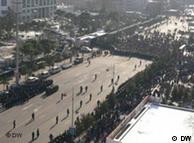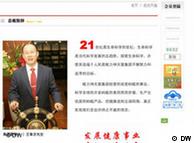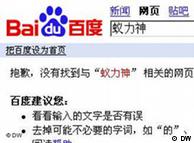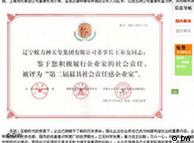Urban poverty in India
A flourishing slum
Dec 19th 2007 | MUMBAI
The residents of Dharavi, allegedly Asia's biggest slum, are thriving in hardship
Panos
AROUND 6am, the squealing of copulating rats—signalling a night-long verminous orgy on the rooftops of Dharavi, a slum in Mumbai—gives way to the more cheerful sound of chirruping sparrows. Through a small window in Shashikant (“Shashi”) Kawale's rickety shack, daylight seeps. It reveals a curly black head outside. Further inspection shows that this is attached to a man's sleeping body, on a slim metal ledge, 12 feet above the ground.
With maybe a million residents, crammed into a square mile of low-rise wood, concrete and rusted iron, Dharavi is a squeeze. And in Shashi's family hutment—as slum-dwellings are known in Mumbai, where half the city's 14m people live in one—it feels like it. As the sparrows stir, so do the neighbours. Through the plank-thin walls of the tiny loft where Shashi, a jobbing cleric-cum-social-worker, lives above his parents, come the sounds of people bumping and bickering.
On one side is a family of 12 living in a 90-square-foot room—about half the size of an American car-parking space. On the other, eight people share a similar area. Night-sounds suggest they include a man with a painful cough, a colicky baby and an amorous couple. At least they can squeeze inside, unlike the man roosting behind Shashi's hutment—and unlike Parapa Kawale, a 22-year-old friend and neighbour, who had dropped by the previous evening to share a spicy bean curry.
Parapa, a semi-skilled electrician, lived with his parents, two brothers, their wives and two children in a room of 48 square feet. If half the family members slept on their sides, they could just about fit. But as the only single male, Parapa felt a dreadful gooseberry. Like Shashi, he is a member of the local branch of the Communist Party of India (Marxist), which tells Dharavi's youths not to marry unless they can support a family. Wretched nonetheless at the nightly coupling around him, Parapa began sleeping in the alley outside—and drinking heavily.
A month ago, explained Parapa, a strapping, beaming, Chaucerian fellow, he chased one of his brothers and a wife from the hutment in a violent, drunken rage. They fled back to the remote village in southern Karnataka that the family emerged from three decades before. Parapa then fixed a man-sized plank to the hutment wall, so that while his father and brother made love to their wives below, he could stay chastely on the shelf. Still, he sometimes sleeps outside, beside an open sewer, in the blissful quietude of the street.
During a four-day stay in Dharavi, as the guest of Shashi and his friends, your correspondent heard many such tales: of hard times, facing up and getting by. The narrators were sometimes bitter or suspicious, but mostly friendly, almost invariably courteous, and occasionally, like Parapa, very funny. If poverty can seem dehumanising from afar—especially in much reporting on it—up close Dharavi, which is allegedly Asia's biggest slum, is vibrantly and triumphantly alive.
Soon after 6am, in the metre-wide street outside Shashi's hutment, an ugly morning ritual has begun. “It's my turn! My husband needs to get to work!” a woman shouts, in jostling over a water tap. In Shiva Shakti Nagar, a slum area of dalits (former “untouchables”) from rural Maharashtra, there is a tap for every ten houses, or roughly 100 people. “Push off! My kids are late for school!” another woman lashes back.
All along the street, water is gushing into blue plastic tanks and aluminium tubs, washing sticky breakfast dishes clean. It flows down the street in a rippling sheet. Bisecting it is an open drain, which gushes torrentially, flushing away the detritus of the previous day.
From the stink of this, it includes a lot of human excrement—which tiny naked children, squatting with their backsides jutting over the torrent, are busy adding to. In fact, it is not supposed to be used for this purpose. The locals are instead supposed to take their turn at a block of 16 public latrines, serving 300 hutments (or 3,000 people). It costs a rupee a visit—or 30 rupees (75 cents) for a monthly family ticket.
Outside the men's side of the block, a line of bleary-eyed dalits are silently waiting. Most are still dressed for bed, in cotton shawls and sarongs—for custom dictates that they purge before washing. Wordlessly, they usher this foreigner to the front of the queue. And he remembers words of welcome uttered by another Dharavi Marxist, Raju Korde: “A guest is from God, but I'm worried that you won't like our toilets.” Happily, the Asian-style loos are as clean as they could possibly be.
At 7am the early shift begins in Dharavi's 15,000 hutment factories. Typically, they consist of one or two jerry-built storeys, stuffed with boys and men sewing cotton, melting plastic, hammering iron and moulding clay. Indeed, it is for its industry, not its size, that Dharavi is most distinctive. The clothes, pots, toys and recycled materials its residents produce earn them millions of dollars in annual exports alone. As the sun climbs over Dharavi, a rising timpani of metal on metal, a whirring of small machinery, indicate that the working-day has begun.
Ramesh Kadam is at his desk in the Peela Bangla (Yellow Bungalow) tannery company. One of the oldest in Dharavi, it occupies the same factory, beside a stinking black creek, that Mr Kadam's grandfather founded in 1918. The site was chosen for its proximity to the main slaughterhouse of Bombay, as Mumbai was called. Handling meat and tanning leather are considered unclean in Hinduism, so the factory was built out of sight, on an island, with villagers of the lowly Koli fishing caste mending their nets on its shore. Indeed, much of Dharavi was underwater at that time. And so it is today when the monsoon comes, flooding the slum with black creek water and sewage.
Panos Shashikant Kawale, a courteous host
Shashikant Kawale, a courteous host As Bombay boomed, on the back of its port and textile mills, poor peasants flowed in from the land. During periodic famines—including one in Bengal in 1943 that killed 3m people—they came in spate. Dharavi is where these migrants claimed—or reclaimed—a plot. Shashi's parents were propelled from Karnataka by a drought, arriving in the city with five small children in 1976. “In the village we were starving,” says his mother, Shantabai, creator of the tasty bean curry. “Here, we were poor, but we could eat.”
Mr Korde's parents, landless vagrants from central Maharashtra, trekked in around the same time. His father died recently of tuberculosis, after a career spent hefting sacks of lentils in a factory. His mother, Leelabaiy, a pugnacious 65-year-old jangling with green bangles, lives with Mr Korde and his wife and two children in a three-room slum-house. Unlike her husband, she had some schooling, and retains a slightly sophisticated air. Asked why she married down, she lifts up seven fingers—one for each of the elder sisters who had first to be found a husband and dowry.
With this history, Dharavi's population is diverse. Tamils, Andhras, Assamese, Biharis, Bengalis and local Maharatis; all India's peoples are here. Perhaps a little over half belong to India's poorest groups: dalits and Muslims. They tend to live semi-ghettoised, as in Shiva Shakti Nagar, within the same language group. Indeed, the poorer Dharavi's residents are, the more caste-sensitive they are likely to be. Mr Kadam is a dhor, of the dalit tanning caste. Yet as his business thrived, his family became middle class, a powerful identity. Last year Mr Kadam exported 25,000 leather belts to Wal-Mart in America. He has moved his family from Dharavi to a smart suburb of Mumbai. Laughing proudly, he says his teenage son refuses to visit the ancestral factory, which he considers dirty.
The four children of Venkatesh Dhobi, all aged ten years and under, cannot shun their ancestral pool of filth. They work every day in this well of brown water, beside a litter-strewn railway line. They pass unwashed clothes into the pool, where 20 adult dhobis—of the dalit washer caste—soak and scrub them. With an explosive grunt to keep rhythmic time—a sound not unlike that emitted by Japanese Noh theatre actors—together they thwack the heavy sopping clothes onto smooth stones. The children then strew them between the railway tracks to dry.
They are the fifth generation of Dhobis to work at this pool. The first, says Mr Dhobi, was his great-grandmother, who arrived from Mehaboob Nagar, in Andhra Pradesh, a century ago. “For 100 years, we have served this city,” says Mr Dhobi, a short 35-year-old with the torso of an underpants model. And yet their rural roots have survived. All the dhobis in the pool—which is called Dhobi Ghat—are from Mehaboob Nagar. Aged 14, Mr Dhobi was married there to a local girl. The big changes of the past century, in his view, seem to be that Dhobi Ghat has got much dirtier and people send fewer clothes to be washed in it. India's swelling middle class—people like Mr Kadam—prefer washing-machines. Together, Mr Dhobi, his wife and four children earn less than 200 rupees a day.
Dharavi's diversity can be a problem. In 1992 communal rioting swept Bombay, sparking battles in the slum between Hindus and Muslims. Around 200 people were killed. But multi-culturalism is also a blessing. Unlike the city's more homogeneous shanties—including a rusty sprawl of 300,000 mostly Maharatis along the runways of the city's airport—Dharavi is too fractured, and massive, to be claimed as a vote-bank by any gangster-politician.
But the slum has known gangsters. In the 1970s a godfather of the Bombay mafia, Vardarajan Mudaliyar, more or less ruled it. Using the slum's large Tamil community—his own—as a base, he ran moonshine and prostitution rackets. He also claimed ownership over thousands of illegal hutments, and extracted rents from their occupants. So did his gangster rivals. In those days, Dharavi was dangerous.
It has become safer for two main reasons. One is that in 1976 the state government gave the slum-dwellers limited rights over their hutments. They were recognised as “identified encroachers”, a status guaranteeing compensation in the event that the government bulldozed their shanties. In return, the government began collecting peppercorn rents—currently around 100 rupees a month for each hutment—on the encroached land. It also started supplying Dharavi with mains water and power, which the gangsters hitherto had stolen from the city and sold in the slum. This step put the slumlords out of business, and started a modest property boom. Today, tiny hutments in Dharavi are sold, without title, for 500,000 rupees.
Not all Dharavi is benefiting. Rajiv Gandhi Nagar, a huddle of hutments behind Mr Kadam's tannery, still has almost no mains power or water. In a shack cut into a bank of rubbish, overlooking Mumbai's plush Bandra Kurla business district, Karnla Ishwar, an aged widow and day-labourer, describes the cost of this. She buys water by the bucket an arduous ten-minute walk away. She buys electricity, at 100 rupees per appliance per month (plus a 500-rupee deposit), from a neighbour.
But Ms Ishwar is unlucky. With reliable power and water, many of Dharavi's residents have been able to start businesses inside the slum. In this they had a great advantage—the other main reason for the slum's rise. As Bombay expanded, so Dharavi became the heart of India's commercial capital. Indeed, in a city of notoriously rotten infrastructure, the slum is a transport hub. It is sandwiched between Mumbai's two main railway lines and ringed by six stations. In addition, Dharavi's hutment industrialists enjoy the competitive advantages of slum-life: cheap labour and an environment where government inspectors fear to tread.
Mr Korde, a portly 40-year-old, has seized this opportunity. The son of an unlettered vagrant, he has a business degree from Mumbai University and several small companies: a mobile-phone shop, a printing business, also a share in a co-operative bank. He reckons to earn 25,000 rupees a month. A decade ago, he bought his slum-house, on the western edge of Dharavi, for 450,000 rupees. Its value has almost doubled. “I am a Marxist and also an entrepreneur,” he says, a trifle defensively, in the nearby office of the Communist Party, seated beneath colourful portraits of Stalin, Lenin, Engels and Marx.
Panos Venkatesh Dhobi, swamped with work
Venkatesh Dhobi, swamped with work An evening stroll through Dharavi with Mr Korde, a well-liked local, is inspiring. Think 19th-century boom-time Brooklyn. In fluorescent-strip-lit shops, in snatched exchanges in the pedestrian crush, as a hookah is passed around a tea-stall, again and again, the stories are the same. Everyone is working hard and everyone is moving up. All Mr Korde's friends—or their fathers—arrived in Dharavi much poorer than they are now. Most own at least one business. Some of these slum-dwellers employ several hundred people.
Aftab Khan is typical. A tailor with a trim moustache, and scholarly wire-rimmed spectacles, he arrived from Uttar Pradesh (UP) 20 years ago, with little more than a needle. He now employs a dozen youths—all recruited in his native village—to turn out 150 items of children's clothing a day. In workhouse fashion, they eat and sleep where they labour, in the upper two floors of a hutment. Reachable only by a ladder and rope, this resembles nothing so much as a tree-house with sewing-machines. Yet for their drudgery, the apprentices earn 200 rupees a day—about four times a rural wage in UP.
The evening is darkening. And beside a barrow heaped with bright orange vermicelli—a sticky fibre eaten during the Muslim festival of eid—Mr Korde introduces a local celebrity. He calls himself Raja Bhai, or King Brother. A handsome Bihari, and comic, Raja Bhai has in 15 years built a garment business employing 200 people. His success is impressive. Yet it has left him exposed to the predators of the informal economy: rent-seeking officials. To protect himself, he is now launching a second career, in politics.
In Dharavi, Raja Bhai is looking for a ticket with the Congress party, for the next municipal, or even state, election. Meanwhile he is campaigning for the Lok Jan Shakti party, a champion of low-caste Biharis, in his native state. Either way, he is sure he will soon get elected office—and with it the clout he will need to drive away the shake-down merchants.
For thousands of men like these, Dharavi is a wonderful opportunity. But for millions of Mumbaikers, it represents a cost. Their city, South Asia's biggest, is choking. Its infrastructure is a crumbling disaster. And yet over the next decade, the UN says the population of Mumbai will almost double, making it the world's second-biggest city after Tokyo. Massive urban redevelopment is required—starting with Dharavi, at the city's heart. By one estimate, the slum's land alone represents $10 billion in dead capital.
For a decade, the state government has tried coaxing the slum-dwellers to let it bulldoze their hutments and build high-rise apartments instead. Each dispossessed family is entitled to a flat of 225 square feet. After 30 years, they will be allowed to sell it. But only a few have accepted this offer. So now the government is trying to enforce it. In August it put the bulldozing and redevelopment of Dharavi, in six parcels, out to tender. The work was due to begin this year. But it has been stalled by bad press nationally and local protests, organised by Mr Korde.
For small businessmen like him, the redevelopment plan is a nightmare. The slum's hutment factories, havens from tax and regulation, would be destroyed. In their place would be purpose-built workshops, for rent at commercial rates. “I will be finished,” says Mr Khan, the scholarly looking tailor. For poorer residents, like Ms Ishwar, the widow living in rubbish-blown misery, the story would be different. Her new apartment, unlike her current hovel, would be fit for human habitation. If she, or rather her relatives, sold it, they would be rich. Either way, Mr Korde admits, the scheme will eventually happen.
Eyevine Business is piling up for the recyclers
Business is piling up for the recyclers So, these may be the last days for Dharavi. If so, much that is wretched will be lost. And, who knows, maybe something better will arise. Most of the slum-dwellers doubt this. And a few high-rise blocks, scattered across the slum, do not inspire great hope. Many are half-built and slowly mildewing. Lots of their residents, it is said, have already sold up illegally, and moved back to the slums, seeking things that town-planners cannot provide: a sense of history, community and freedom. Dharavi has these, as well as many horrible problems. It is organic and miraculously harmonious. It is intensely human. Unlike the random tower-blocks, Dharavi makes sense.
It is 2am, and a violent drumming erupts outside Mr Korde's house. Booming in a six-beat rhythm, it ends in a crashing roll. This is repeated, again and again, rising as the drummers approach. The sound is thunderous. A few huge rats rush by the window, fleeing the noise like driven pheasants. And suddenly the drummers appear, parading through the slum, dragging on wheels a huge statue of Durga—a Hindu goddess, a multi-limbed and multi-coloured giantess, astride a tiger.
On the drum-roll, the processors pause, and golden flares explode either side of the statue. In every doorway, along the alley, slum-dwellers are watching in silence. It is a thrilling and dream-like sight. This is apparently quite normal in Dharavi.


















